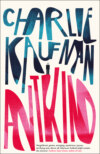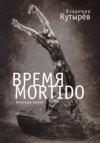Читать книгу: «Antkind: A Novel», страница 6
CHAPTER 8
DEFEATED, I RETURN to my work on Enchantment, but with little enthusiasm. Certainly there is important, essential work to be done here. It is likely that Ingo’s film is rubbish, not because he’s African American, but rather because most everything everyone does is. Rubbish is the rule, genius the exception, my father always said. Still, it might’ve offered a window into Ingo’s struggles as an African American. I can imagine his little film explores issues of racism in the way Micheaux did in Within Our Gates, but with considerably less skill. The film would most likely be a curio of some sort (maybe to be posted on Poems and Curios!). One does not discover buried geniuses willy-nilly. If Ingo is unknown, there is certainly a very good reason. There are cases, such as my own, in which the reasons are not valid and come down to simple bad luck and possible conspiracies against me because I have consistently spoken truth to power, and because the cabal of Jew—
My phone rings. It is a number both unfamiliar and local. I do not know anyone in town except the small-headed curator at the film society, the building manager, and—
“This is Ingo Cutbirth.”
“Ingo!”
“From across the hall.”
“Yes!”
“I’m your neighbor.”
“Uh-huh,” I say.
“I saw your film,” he says.
This takes me aback. No one has seen my film.
“Gravity in Essence?” I ask, needing to be certain.
“I believe the critics to be wrong,” he says. “The film is not, as they have written, incompetent, pretentious, unrelatable, sophomoric, unbearable, precious, completely unrelatable—”
“You said unrelatable already.”
“I said unrelatable the first time, not completely unrelatable. Those are from different reviews. And it is neither. I was profoundly moved by the plight of the protagonist, B. Rosenstock Rosenzweig, as he, like his personal heroine, Bisadora Runcan, struggles to make one authentic gesture, albeit not in the world of dance, but in the realm of ideas.”
“The critics were unkind,” I say. “Thank you.”
“I, too, am a filmmaker,” he says.
“Yes. I know!”
“And I was hoping,” he continues, “perhaps you might be willing to assess my first effort. No one has seen it.”
“Thank you! Yes!”
“I will not share my reasons with you, but I do have them.”
“I understand.”
“Perhaps those reasons will become evident to you at some point in your life.”
“OK.”
“That I cannot and will not say,” he says.
“Time will tell,” I agree.
“I can tell you this: No man is one thing. Only a fool believes that. And a fool is also not only one thing, either.”
“That makes a lot of—”
“For sometimes a fool can be the wisest of men. ‘If one does not understand a person, one tends to regard him as a fool.’ Carl Jung said that. There’s a great deal of truth in that sentiment. And of course Jung was such a great influence on my work, indeed on the whole of the twentieth century, what with his introduction of the notion of the collective unconscience.”
“Unconscious,” I correct.
“What now?” he says.
“Collective unconscious,” I say.
“That’s what I said,” he says.
But it isn’t.
No matter. This Ingo Cutbirth is full of surprises. Now he sounds almost like me. How many times have I cited Jung on exactly this point as it pertains to my own life? My friend Ocky does a terribly mean (but playful!) impression of me reciting that very line (correctly!), and I must say Ingo almost sounds like Ocky now. Is Ingo imitating me? Is he imitating Ocky? Or is he a multifaceted individual with interests similar to my own? I am a horrible racist! No matter! I am going to see his movie!
I SIT ON a hardback wooden chair in the darkened apartment aface the portable tripodded movie screen, while behind me, Ingo threads the projector. The comforting, familiar chatter of the film-machine interface begins, and without titles or other fanfare, so begins Ingo’s film. It is black and white (the significance of this particular detail has not yet been revealed to me!) and ancient, a charmingly naïve stop-motion animation. A pause here to explain the history of the form. Stop-motion, sometimes called stop-movement or incremental step prop animation or object animation or three-dimensional animation or articulated prop animation or (colloquially and inaccurately!) Claymation, is nearly as old as the motion picture itself. The earliest example: Heinrich Telemucher’s 1891 short feature Ich Habe Keine Augapfel, in which two eyeballs drop from a man’s face and roll around for a long while on the floor. The film is important for two reasons other than its significance to the timetable of the history of animation. Number one, it is the first film in which someone’s eyeballs fall out. And secondly, this device became a staple of both Romanian silent films and early Japanese talkies. Whereas Romanian cinema used the device as a metaphor for the 1918 union of Romania with Transylvania, Bukovina, and Bessarabia, the Japanese used it for straightforward comic purposes, often having the newly eyeless character exclaim, “Now I can see the way two balls on the ground see!” or “I look much taller from down here!” It eventually became so commonplace in Japanese cinema that one Japanese film critic quipped pithily, “All those eyeballs falling out is enough to make one wish one’s own eyeballs would fall out so one would no longer have to watch even one more movie in which someone’s eyeballs fall out.” Granted, it is pithier in Japanese, in which the entire sentiment is conveyed in kanji with just one character.
A long, jagged scratch, screen right on black leader, is my introduction to Ingo’s oeuvre. The line skips about merrily, then disappears, then reappears. It transforms into a kind of Morse code of dots and dashes, and then it is gone forever, replaced by the China Girl.
Ah, the famous, beautiful China Girl of cinema, to whose colorful countenance everything to follow is calibrated—she is both the watcher and the watched, both the seen and the unseen. It is from this self-contained, placid, Mona Lisa–smiling beauty that Momus springs, the mocker, the malevolent god of comedy, the presently defanged agent of humiliation, monstrous laugher from beyond the fifth wall, unseeable but ever felt, sister to Oizys, goddess of misery, who waits to envelop us in her viscous stew, and out of this the film begins in earnest: a birth, silent of course, the death-rattle chatter of sprockets, shutter spinning like that madman in Washington Square, the inevitable, relentless background noise of this clockwork universe to which we have found ourselves exiled, now witnessing The Origin of the World, but unlike Courbet’s version, ours yawns wide to reveal a coming world, as a head crowns, pushing forth a new consciousness, it seems, protected by its skin-covered casing, but at the same time vulnerable to influence, to corruption, its fontanel bared to us—what better symbol of the openness and hence the complete vulnerability of the very young? Is it a metaphorical accident that the cranium will fuse in months to come, thus illustrating the ensuing closed-mindedness, the inevitable, tragic separation of the I from the World?
The ego always wins, of course. It always does. And at what price?
Now a man, or rather a man represented by a doll, in top hat and tails walks with great effort from screen right to screen left. Is there a windstorm? There appears to be, for the man leans into it, holding on to his hat. Behind him a crude but delightfully painted backdrop depicts a city street.
Cut to the inside of a human skull.
Certainly stop-motion was still in its infancy in 1916 when this movie was begun (or is that when Ingo was born?), and the technique is in so many ways primitive, but this is not the typical novelty magic-trick animation of the time. This is startling, revolutionary. What if, the movie seems to posit, inside each of our heads, we have personified emotions—joy, fear, rage—in essence at war for dominance? Granted, this was not a new idea, even in 1916, and the inherent fallacy of this charmingly naïve notion is obvious to anyone who has read Danny Dennett or the history of the Homunculus Argument. But, oh, what Ingo does with it! Using the limited technology available at the time, which might have hobbled the efforts of a lesser artist, Ingo exploits the resulting choppiness to explore a quantized interior universe where experience is not fluid, where discrete breaks fragment the thought process, where the limits of reason are exposed like nerve endings. Remember, this was a mere three years after Duchamp’s Nude Descending a Staircase, No. 2 caused a sensation at the New York Armory Show. Had Ingo been aware of the painting? Had it simply been in the zeitgeist? Certainly the Futurists had already published their manifesto by then. In any event, we see the homunculi at war with one another in a brain interior resembling a factory. There are, of course, the two windows, which represent the eyes, overlooking the outside world. Who is this being through whose eyes we now see? It is at this point still a mystery. But within this battle we recognize all the emotions at play (or at war!). And then through the windows we see a girl. The little fighting creatures stop. They stare at this beautiful young woman regarding herself in a mirror. She, too, is a doll, but a doll who has access to a world the creatures can only know through the windows of their prison, into which she now peers. They cannot look away, until she, smiling shyly, does. A title on screen redundantly announces her as The Beloved.
And the internal battle resumes.
Cut to the man fighting the wind.
After five more seconds of slow forward progress, the puppet man slides back, in a way that resembles the performance of a practitioner of the art of pantomime or Mike Jackson doing his delightful “Moonman Walk,” but this fellow appears to be in an actual windy environment because objects blow past him: a pram, a young boy on roller skates, a newspaper, which tumbles by in a simplified manner as a stiff board, its front page facing the viewer throughout. Is the newspaper legible? I attempt to synchronize the movement of my head with the movement of the tumbling newspaper. It is! At least some of it! “Big Windstorm Expected” is the headline. How funny!
Back to the birthing scene: That all this, the miracle and tragedy of coming into being, is performed by inanimate objects fashioned to resemble biologic ones does not go unnoticed by the viewer. The baby is born, the spread-eagled humiliation of the mother complete, for the moment. The umbilicus is cut, another metaphor, and this wailing mass of meat is assigned humanhood. He is white; he is male: He is privileged. This birth is at night, an odd, specific choice, since most births occur in the early morning. Is Ingo attempting to tell us something? Is the mother perhaps Nyx, the goddess of night? This would make these twins (for, yes, here comes another one!) Momus and Oizys, gods of mockery and misery, as anticipated. What will they conjure into existence on this the eve of the First World War? Is the male mocking his sister for her “missing” genitalia? Of course, we now know that Freud was wrong and misogynistic and, indeed, suffering from womb envy, and eventually jaw cancer, but perhaps back then when Freud’s theory was new and exciting, is it not possible that Ingo found himself intrigued, to say the least? And Misery, as is her way and perhaps the way of so many females (tragically!), internalizes her wrath, indeed is compelled by society to do so. This eats away at her, making her miserable, thus spreading through her system, dripping from her pores and infecting those around her, who, in turn, infect those around them, and so goes the world. The babies are born, and with their birth begins the acknowledged horrors of the twentieth century, the bloodiest century in human history.
CHAPTER 9
A STRANGE OBJECT, LARGE and malformed, drops from the sky behind the top-hatted man. It must be made of clay (as are humans, by the way, in so many creation myths) because it flattens upon contact with the ground. Another follows. There appears what can only be described as blackish liquid oozing from them. The horrifying hurled and sundered “bleeding balls” aside, this is a charmingly naïve undertaking. The man continues his trek across screen, and his journey causes me to reflect upon my own love of weather. The complexity of it, the power, its capricious nature. Of course weather is analogous to the finest art: invisibly moving in countless directions at once. If one watches a tree in a breeze, it becomes immediately apparent that rather than the wind blowing the tree uniformly, micro-currents move each leaf, each branch separately. The tree, leaves, and branches bounce and roll and describe circles all at once. Although Ingo’s interest appears to be in the comic potential of weather and mine in its metaphor as an engine of fate, I do feel a certain kinship with— What’s that? The top-hatted man himself is suddenly blown every which way. His tails fly up behind him, and as he attends to this immodesty, his top hat tumbles off screen right. A toy balloon blows toward the viewer, while a second toy balloon blows away from us. The man spins clockwise in place as would a child’s top, as the roller-skating boy is blown back on screen and circles the man counterclockwise. Although the animation is still naïvely executed, the concepts explored are nothing short of profound. And it is so very comical! Ha! Ha! Especially when the man plops onto his bottom and continues his spin, as if rotating on a pole inserted into his very rectum. Ha!
Soon the little boy is spinning so fast that he takes off, disappearing into the firmament. After a perfectly timed moment, one of the boy’s roller skates bops the man on the head, and after a second perfectly timed moment, so does the other. Dazed, he watches as his lost top hat blows back into frame, then, caught in a gust, lifts. We follow as it tumbles—past buildings, into the turbulent clouds made of cotton stuffing, into the ether. The camera is at first level with the hat, then above, looking down past it at the gentleman watching its ascent, then below looking up at the violent sky. Now it is amidst the clouds, which swirl past in remarkable ever-shifting configurations. The movie has gone in an eye blink from simplistic comedy to transcendent and breathtaking. The black-and-white clouds flash with lightning, the intrepid top hat now floating through a heartbreaking sea of fog. The previously tumultuous weather has settled into the ethereal, and as the hat continues its ascension, the fog thins. Soon our hat-agonist finds itself above the clouds, looking down on them. The obscured, lonely Earth far below. Now we ourselves view the world from the point of view (POV) of the hat! We tumble lazily through space, the Earth a distant stormy memory, the heavens black, punctuated by brilliant points of light. That this journey was influenced by the work of Georges Méliès is obvious, but the animation here is so far beyond anything else of that period. It is, quite frankly, far beyond anything I’ve seen to this day, with the possible exception of Wes Anderson’s The Wonderful Mr. Fox, a phantasmagoric cornucopia of treats for the eye, in every “which-way” on the screen, which reimburses the filmgoer for thon’s repeat viewings. Of course, to put Ingo’s work up against Mr. Anderson’s is prodigiously unfair, as Mr. Anderson is a highly educated aesthete and Ingo a sharecropper’s son (presumably) who worked as a Pullman porter (perhaps), but—although I must reserve judgment until I’ve viewed the entirety of this film—I do believe they will be on almost equal footing in the pantheon of this whimsically idiosyncratic and sadly obsolete art form.
The hat comes to rest on some sort of heavenly body. Clearly it is not a planet in our solar system, as the hat finds itself nested in a field of wheat-like doll arms, rustling gently in a cosmic breeze. Now the hat has become animate, although no explanation is offered. It wanders through the wheat arms, aimless, disenchanted, as we follow from above. The hat is Harry Haller, of course. How Ingo achieves this connection is a mystery. This is, after all, a top hat, but I have not a doubt in my mind that it has become Haller. It is perhaps possible that Ingo, a sharecropper’s son, has never read Steppenwolf (although he is familiar with Jung, so …), but even in that unlikely scenario, some divine force has imbued the hat with Haller’s characteristics, most notably his panoptic despair. As I watch the journey of the hat, I find myself identifying with it. I, too, am Harry Haller, you see. I, too, despair at the mindlessness around me. And so as I follow this Hatty Hatter, if you will, on its quest for meaning in a bourgeois world, I shed a tear for us all. Suddenly the terrain shifts and we (Hatter and I) find ourselves at the foot of an impossibly large mountain, reminiscent of Daumal’s Mount Analogue, which, of course, is decades away from being written. No longer aimless, Hatter begins its climb. I watch from above as it struggles toward me. I am at the peak. This is where we will meet. But who have I become in this scenario? It climbs and climbs, inching ever closer, until it sits before me, eyelessly looking up at me, and I find myself filled with love. I reach down to lift it up, my hands now made of light, and I don it. I can no longer see Hatter because it is on my head (if I look up I can see a tiny bit of the brim). Then after a moment, I remove it, the hat now glowing with its own light. I flick it as one would a Pluto Platter, and watch it spin through black space toward the faraway Earth. Again, I find myself with it as it enters the Earth’s atmosphere and gets tossed to and fro through the still-churning storm (has any time passed at all on this plane?). We finally break through the cloud cover to reveal our gentleman staring up at the sky. The glowing hat alights on his head, filling the man with newfound calm. He continues on his walk against the wind, now buoyant and chipper. Instantly, the wind rips a large branch from a tree, smacks the man in the head, crushing it like a grape, and spraying his oil-black blood everywhere. The man dies.
AND CHILDREN ARE born—the twins, whom we recognize as Momus and Oizys, but whom Ingo identifies (through an idiosyncratic sign language alphabet and key appearing screen right) as Bud and Daisy, botanical names both, which suggest “of the earth.” This reading, of course, further cemented by his choice of Mudd as their shared surname. Bud and Daisy Mudd are inseparable; they play together to the exclusion of all others. They jabber in a private, invented language (key on screen left). They are dressed in identical pinafores. This early-twentieth-century custom of dressing both little boys and little girls as little girls draws an uncomfortable parallel between infants and women (the women never outgrow these frocks, whereas the men become, by stages, by lengthening trousers, adults), but it also suggests that the boys need to “earn” their masculinity. As we now know, all fetuses begin as female. The “male” characteristics only develop later. The male “earns” his penis. At least that is what our forefathers (not to mention my own personal father, Jeremy) believed. Another and perhaps more accurate way to look at this quirk of genetics is that the male overshoots the goal of female perfection, developing past the ideal, much as the Irish elk grew a rack so large and unwieldy as to, in the end, lead to its own extinction, so the male, due to a flood of testosterone, develops a penis, that most unwelcome and unwieldy of racks (not to be confused with the so-called female rack, or bosom). Some have jokingly referred to it as a second brain, but in all humor there is, in addition to abject horror, a basis in truth. And we must wonder, as Ingo does, is the world better for these unwieldy penis “racks,” or will they, too, bring about the demise of a species?
And then, and then, and then: Daisy is accidentally but viciously murdered by Bud during a child’s game of jacks gone terribly wrong. This is the metaphoric amputation of his feminine self.
Important note:
Wolfgang Pauli?
Unus mundi?
Spin theory?
Must understand! Research!
It was, of course, an accident involving the jacks game and a bayonet brought home from the war by the twins’ father. This ragged amputation from self haunts Bud and will lead to a lifelong separation anxiety, his pairing and re-pairing (repairing!) with his future partner (a predictive title card informs us) an effort to repair his severed anima. One is put in mind of the eternal un-pairing and re-pairing of hydrogen and oxygen atoms as they un-form and re-form water, recognizing this process is analogous to the eternal un-pairing and re-pairing of Mudd and Molloy (Mudd’s future partner, a second title card informs us) writ small (writ large!).
Note:
Water splitting? Research this! Did I pack my Lachinov? Check trunk (boot) at earliest opportunity!
To further the analogy, Mudd alone is in truth two, in that Daisy is forever part of his psyche. The scars of her absence in his life, which exist as memories, provoke his every decision. Thusly, Mudd is the hydrogen (two atoms) to Molloy’s single atom of oxygen. Mudd is explosive and Molloy is corrosive. Yet together they sustain life. Surely this is what Ingo must be telling us in a title card that tells us this.
The screen goes black, horribly, darkly black. Clack, clack, clack, clack …
Начислим
+38
Покупайте книги и получайте бонусы в Литрес, Читай-городе и Буквоеде.
Участвовать в бонусной программе










